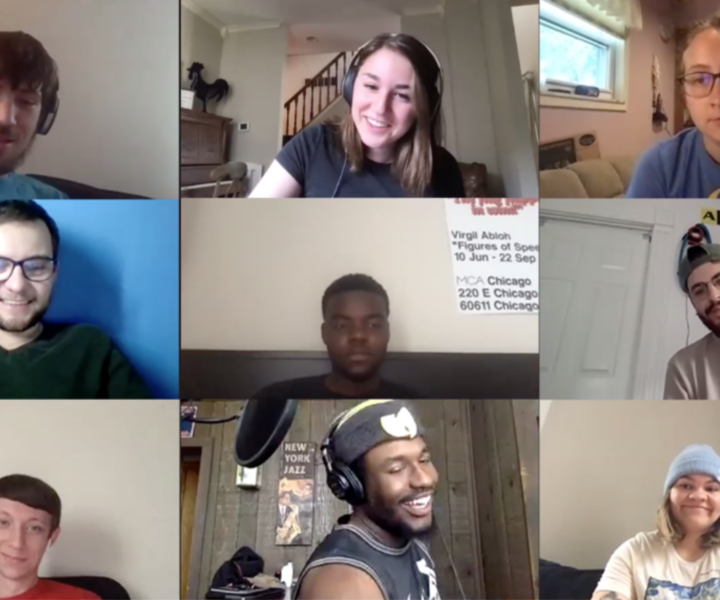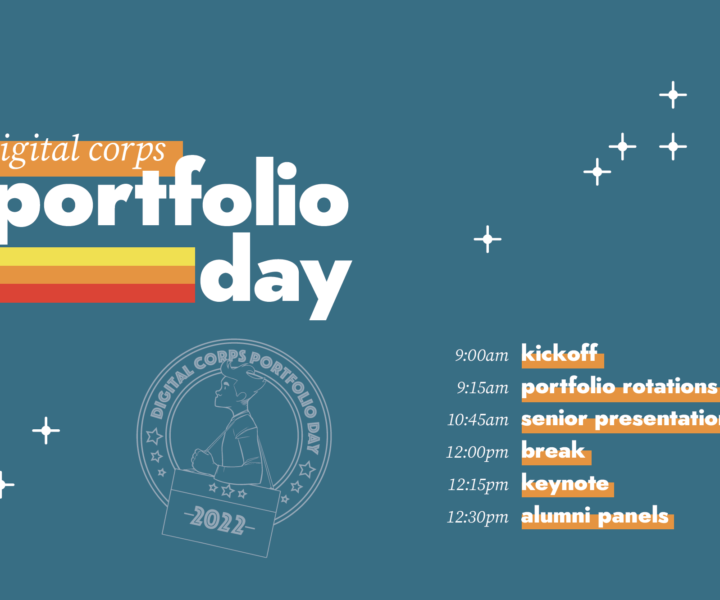Nearly every job description I have come across, from customer service to internships to corporate jobs, have all had some basic qualification along the lines of “Effective written and verbal communications skills.” While this expectation has never driven me away from an application, I know that others might find it daunting.
While written communication often undergoes many iterations, verbal communication requires more tactful thought and interpersonal skills. If you understand how you best communicate at work, you probably won’t be too scared of these expectations. However, if you’re not confident in your communication skills, it might be a challenge traversing your work environment and building relationships with your coworkers.
At the Digital Corps, we strive to keep an open environment and encourage our students to be comfortable communicating beyond the walls of their individual teams. Between soft skills meetings, team meetings, and project meetings, we push our students to work and communicate in a way that’s comfortable for them. Understanding how individuals effectively communicate in a work environment is an important part of supporting the workplace community.
What is effective communication?
Coursera defines effective communication as “the process of exchanging ideas, thoughts, knowledge, and data” so that messages can be clearly delivered and received with purpose and understanding. Developing and practicing effective communication in the workplace allows employees to build and strengthen relationships, work efficiently in teams, and enhances collaboration and creativity.
4 communication styles (DiSC)
To learn more about how our students communicate in the office, we had them take the Workplace Communication Style Quiz by Atlassian. Quiz takers are sorted into four different communication style quadrants: dominant, influencer, steady, and conscientious, or DiSC. Each DiSC profile has a distinct personality based on their ability to communicate with people, focus on tasks, and practice emotional balance.
Dominant communicators
The dominant communication style is known as the director of the communicators. Dominant communicators are task-oriented and decisive with their work. Project Management Graduate Assistant Lauren Wineman falls into the dominant communication style. She thinks this accurately reflects her habits at work, and she can see where this communication style comes into play both in and out of the workplace.

As a project manager, Wineman takes a lot of time to carefully plan timelines and make sure deadlines are feasible. “You have to take in those risks and key issues that evolve, but I can easily adapt and still push that timeline.” Wineman attributes her dominant communication style to her adaptability and effectiveness at work. She also acknowledges that there are some downsides to the way she communicates and is trying to improve.
When asked what she thinks her communication weaknesses are, Wineman says, “Bluntness. I think it can come off in the wrong way, especially in our [work] setting. Sometimes it’s hard to get the point across in a way that’s not harsh but wanting to make sure we’re getting what the client wants, done.” Working in a creative, open agency environment has its benefits, but we still have clients whose visions differ from our own. Wineman tries to be the champion for her project teams’ ideas, but knows she still has to provide critical feedback when clients have certain expectations.
Influencer Communicators
Influencer communicators are the socializers of the group. These communicators are people-oriented and thrive on interpersonal relationships. Influencers love keeping conversations casual and are very optimistic. Addison Paul, the Communication Team Graduate Assistant, says that she sees her influencer communication type in everything she does, and thinks it fits both her personality and her job very well.

“Part of my job is instigating collaboration and working with other people. I feel like a positive attitude and a little bit of excitement goes a long way in making the team feel motivated. I think the influencer communication style allows me to be a better leader and share excitement with other people.” Paul believes her enthusiasm encourages a sense of belonging in her team members.
Steady Communicators
The steady communication style marks the harmonizer of communicators. Steady communicators are support-oriented and value stability and cooperation at work. Drew Heiss, a Specialist on the Development Team, discovered he falls under the steady communication style. Heiss feels that because he tries to be supportive and collaborative, he produces his best work in an in-person environment.

Heiss admits that although he is a great collaborator, he struggles the most with explaining his development work to people who aren’t developers. When asked how others could help support his communication, Heiss says “I want people to tell me when I’m confusing them. I want them to stop me and say ‘Hey, I don’t understand what you’re saying, can you take a step back?’”
Conscientious Communicators
Conscientious communicators make analytical decisions. These communicators are process-oriented and give attention to every detail. Unlike the dominant communication style, conscientious communicators are reserved and tend to be risk averse. Kallie Hunchman, the Administrative GA, identifies heavily with the conscientious communicator label.

“The number of times I reread things before I send them to [our boss] is insane,” Hunchman says, embracing their attention to detail and cautious habits, “It’s almost always right the first time, and I don’t need to check it that many times, but everything has to be right.” They acknowledge that while it’s a strength to have great attention to detail, they know that it can also be a weakness in the communication process because they can get caught up in the small things while others have moved on in the big picture.
While DiSC communication profiles don’t completely define the way we communicate in the workplace, understanding where we best align on the scale gives us a better understanding of both ourselves and our coworkers. Understanding how everyone comfortably communicates builds workplace morale and improves overall job satisfaction and performance. Striving to be more comfortable with our communication styles will allow us to be more productive and make our work a bit more enjoyable.



